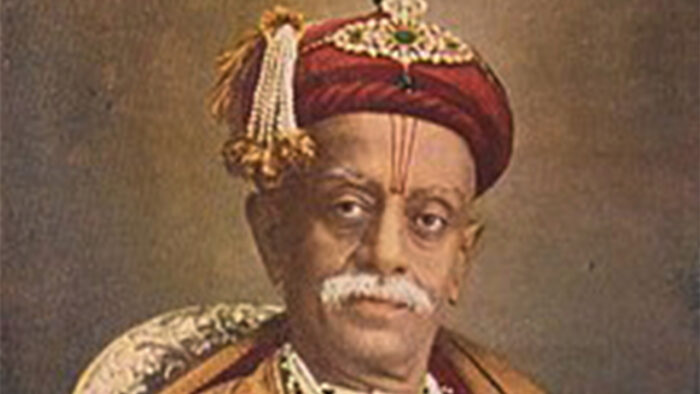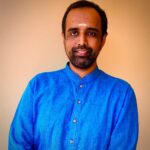Bhawanrao Shriniwasrao Pant Pratinidhi the Maharaja of Aundh the author of one of the oldest books on Suryanamaskar in modern times.
Introduction
I had the opportunity to get a copy of the book - "Surya Namaskars - For Health, Efficiency & Longevity by Bhawanrao Shriniwasrao Pant Pratinidhi, B.A, Rajasaheb of Aundh. It is an interesting book that systematically approaches the practice of Suryanamaskars some 80 years ago. 1940 edition is the fifth edition of the book. From other sources it could be understood that the first edition of the book was published in the year 1928. (so this is 92 year old book in reality)
As International Yoga Day is being celebrated it would be useful to understand the contents and approach of this very important archival document on Yoga which might give inputs for current day practices and perceptions.
The Author
Bhawanrao Shriniwasrao Pant Pratinidhi (1868-1951) is the author of the book.
As the description in the opening paragraph indicates, the author was a Raja of Aundh princely state connected with the Satara region of Maharashtra. The author is a passionate practitioner of Suryanamaskar. Not only did he practice Suryanamaskar, his queen Ranisaheb of Aundh, mother of 11 children also practiced Suryanamaskar. His son Shrimant Appasaheb also practiced. All these are mentioned in the book with photographs. The Raja also implemented the practice of Suryanamaskar in schools in his region for both boys and girls. He was such a visionary Yogic Raja.
The Contents of the Book
The topics covered in the book include -
- The necessity and value of exercise
- Disadvantages of other modes of exercise
- The Best Exercise - The surya Namaskars
- How to do Suryanamaskar
- How the Suryanamaskars help the body and the mind?
- The application of sight and speech on Namaskars
- Health through speaking
- European scientists experience
- Instruction for women in special condition
- Replies to Skeptics
- Personal experiences
- A state at exercise
- Diet, Habits and cooking
- The Guttikar cooker
- Surya Namaskar as a preventive of constipation, consumption and premature oldage
- What can Suryanamaskar do?
- Cash Value of health
- Suryanamaskar exercise alone deserves to be universal
- Conclusion and Appendix
Thus as can be seen from the 19 chapters - the book seems comprehensive, containing details - right from diet, implementing the practice in educational institution, the positive economic implication of the practice Suryanamaskar, making the practice applicable to all genders, scientific inputs (of his times) and personal experiences regarding the practice . Hence this is a very sincere attempt by the Respected Raja of Aundh to bring the practice to every household across India and the globe.
Steps of Suryanamaskar
Let us just directly get into the way the author approached the practice of suryanamaskar.
Rajasaheb of Aundh presents 10 steps in his book on Suryanamaskar.
He gives 10 names for the ten asanas that form part of this Vinyasa.
(It is also interesting to note when he says that this practice is based on what his father did for 55 years (pg.11). (The fifth edition 1940/ First Edition of the book 1928 reducing another 55 years from this – this text itself provides history of existence of this practice Suryanamskar in the country since at least 1873))
The details of the ten postures of his Suryanamaskar are (pg.12-22)-
- avasthānam - Standing - Inhale and hold the breath here
- jānu-nāsam - Knees touched by nose - hold the breath and bend forward and exhale completely after reaching the position
- ūrdhvekṣaṇam- looking aloft - move to this position inhaling deeply and audibly
- tulita-vapuḥ - body balance - reach this position while holding the breath
- sāṣṭāṅgam - (salutation) involving eight parts of the body - holding the breath reach the position and on reaching the position exhale completely
- kaśeru-saṅkocam - spine compression - reach the position and inhale audibly and deeply and hold the breath.
- kaśeru-vikasanam - spine stretch - hold the breath and move to this position and continue to hold the breath here
- ūrdhvekṣaṇam- looking aloft - this position is also reached and maintained while holding the breath
- jānu-nāsam - Knees touched by nose - reach this position and exhale completely and audibly
- 10.avasthānam- Standing - taking a deep audible inhalation reach this erect position
The Raja says practice of all 10 positions constitutes one round. (pg.13). Which leg goes back first and which leg comes to front etc are not discussed.
The Raja also says (pg.9) -
a) Children between 8-12 (boys and girls) can do 25-50 namaskars
b) Boys and girls between 12-16 can do 50-100 namaskaras
c) Persons above 16 can gradually raise the number to 300 Namaskaras according their capacity.
d) person after 65 or 70 can practice Namaskars as much as the body permits
Rajasaheb gives details about the Vedic (from Rigveda and Yajurveda) and Nonvedic mantras (bija mantras also) that are to be used during the practice. These and other prerequisites and preparation for the practice will be elaborated upon in the next post.
Prerequisites and precautions! (Pages 11-33)
- It is suggested that - The practice of Suryanamaskar has to be done before the sunrise in an empty stomach- This is good because, there will be relative calmness and quietness within and outside.
- Also - Waking up at 5 am (in Indian Conditions) - after washing and clothing and wearing light and suitable clothing the practice has to be done.
- Interestingly, the Rajasaheb says - the practice should be completed 5 mins before the sunrise (again this is based on Indian conditions). He opines that the light of the sun is good (which is available before sunrise also) but not the heat of the sun.
- Alternatively Rajasaheb suggests - Or if possible the Namaskars may be done immediately after the sunrise exposing one’s body to the life giving ultraviolet rays of the rising sun. He reiterates that it is not the heat but the light of the sun that heals.
- About the light and heat of the Sun , Rajasaheb further adds - The early morning hours and the late afternoon hours are best because they irradiate and invigorate us with more light than heat. Hence, the importance of morning and evening Sandhyavandana on the bank of a river or lake or in the open.
- Rajasaheb states - One should ensure that rest for five minutes is taken after Suryanamaskar. One should feel fresh and refreshed to start one's daily duties. Rest after Suryanamaskar is very important in that regard.
- Importantly Rajasaheb adds that - a picture or image of the Sun or the deity that one adores, or a circle or a star painted in vivid colours should be hung in the wall before which the practice can be done. This will enhance power of concentration of the mind.
- Another important advise from the Royal Yogin has to be heeded to. It is as follows –“ A certain amount of discouragement is inevitable in the beginning of all reconstructive systems of physical culture like Surya Namaskars. That period must be lived through perseveringly in order to win success. You need stick-to-it-ivenness in this business of developing health.”
- Let us see yet another precaution that the King gives - “Suryanamaskar so should always be performed slowly at first so that you know by the strain which part of the body is being exercised in this way you will see that each part of the body is separately called into play.”
- Most importantly Rajasaheb states – “Long continued Suryanamaskar done loosely or in a sloven manner may give the body some benefit, but the full development of every part, cure of disease or removal of pain cannot be produced unless the whole willpower is brought to bear upon the particular part of the body while actually performing the Surya Namaskars”.
It is amazing to note these most practical and experiential preparatory and precautionary measures suggest by Rajasaheb for Suryanamaskar.
Benefits of Practice of Surya Namaskar (pages 24-34)
The Role of Mind in Surya Namaskar is also discussed. In this regard, it is worthwhile noting the views of the Raja-yogin - “In each stage of the Namaskar the entire will force must be concentrated upon every part, by turns, as it is being taxed during the exercise. Conceive that any particular muscle or part is getting stronger, firmer, better shape or more developed and the object will be attained within a short time. If the mind is permitted to wander during this sacred occupation the result will be only a muscle bound body for all the time and trouble”.
Thus we see that Suryanamaskar even in the early 20th century, was seen not as a mere physical activity - it was seen as a mindful activity for all round development. It is to be noted that the word Mindfulness is considered a recent discovery.
To make Surya namaskar more mindful mantras were used. The next part will be focusing on the mantras - Rigvedic, Yajurvedic and Non-vedic that were prescribed by the King of Aundh.





